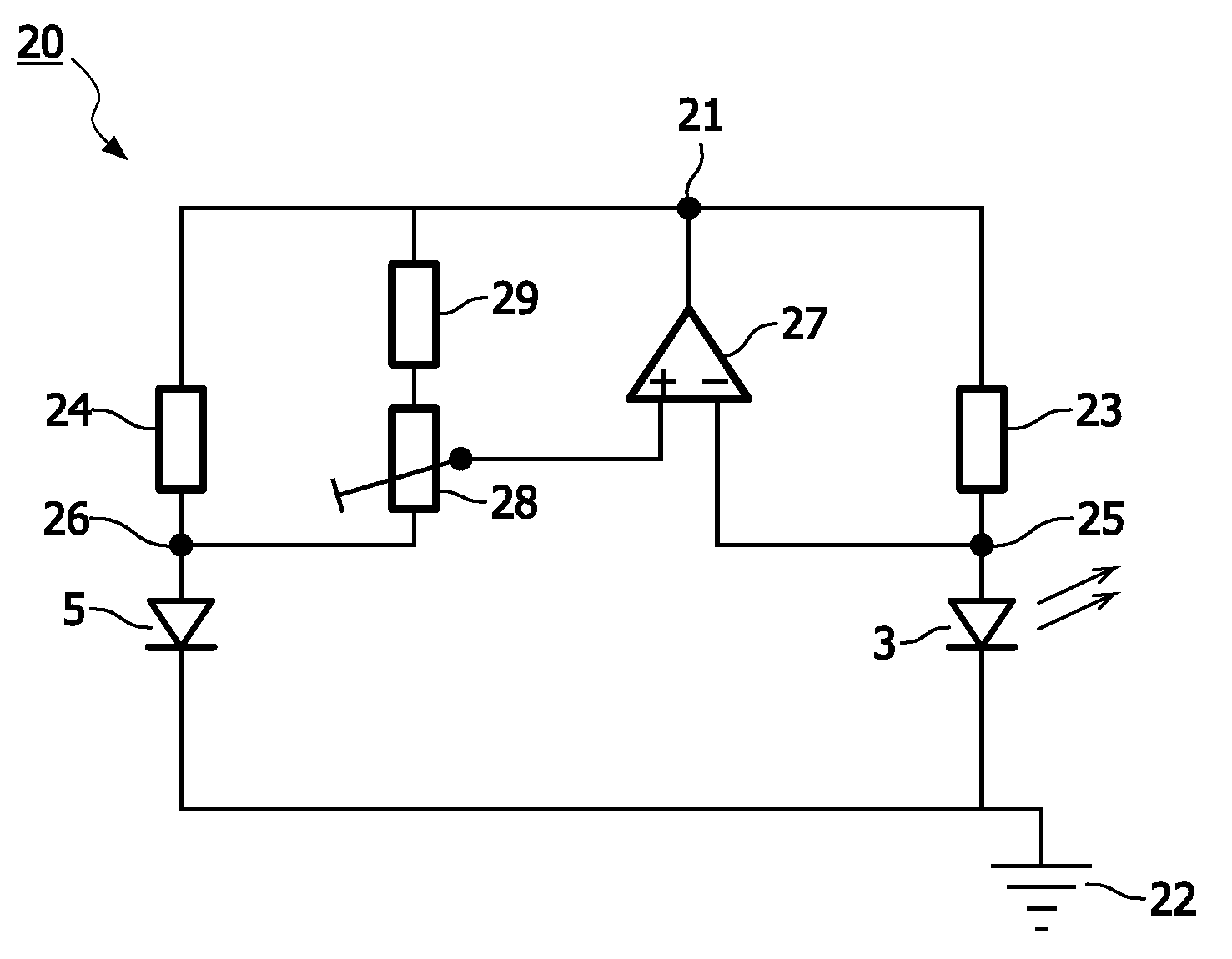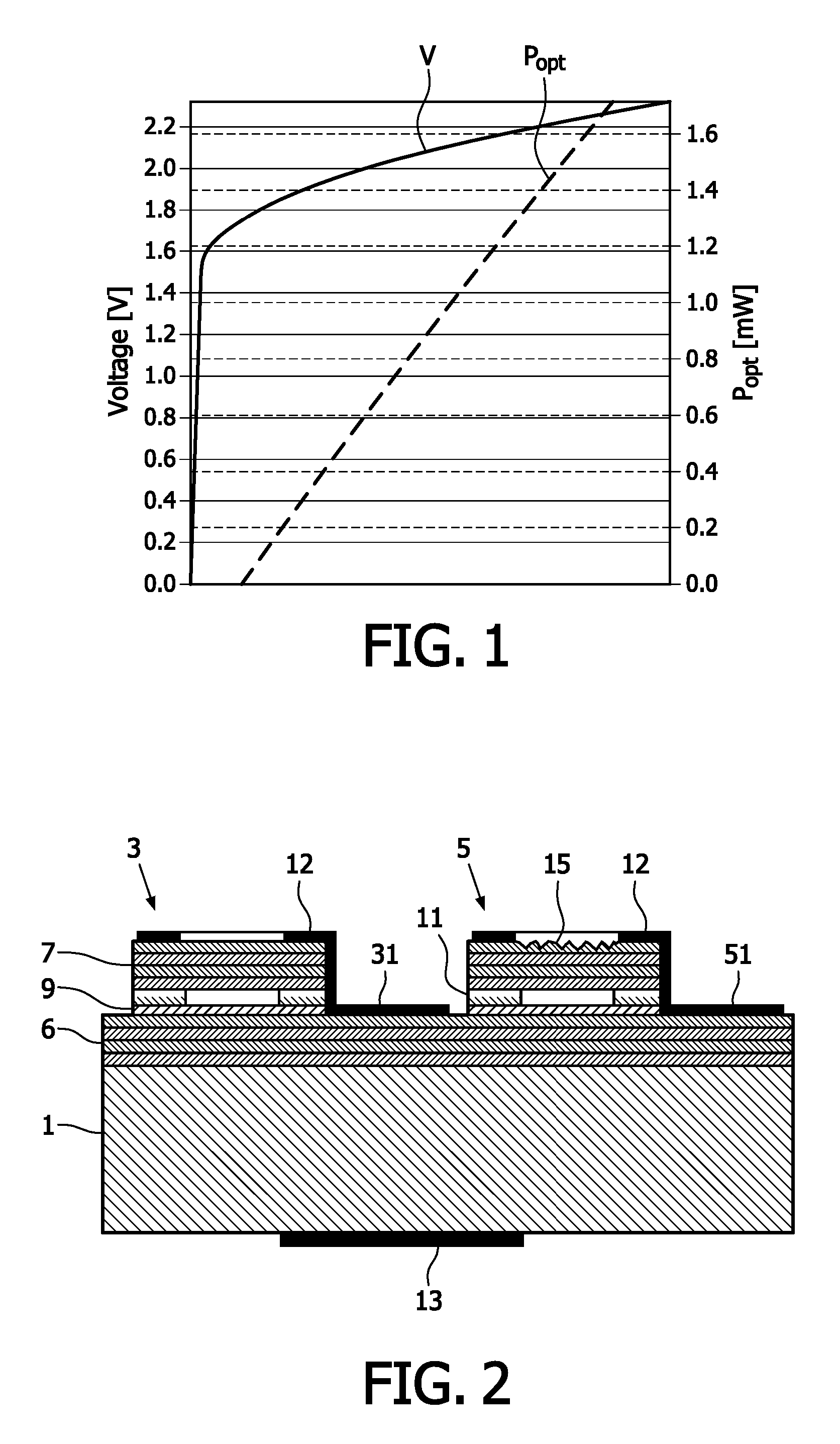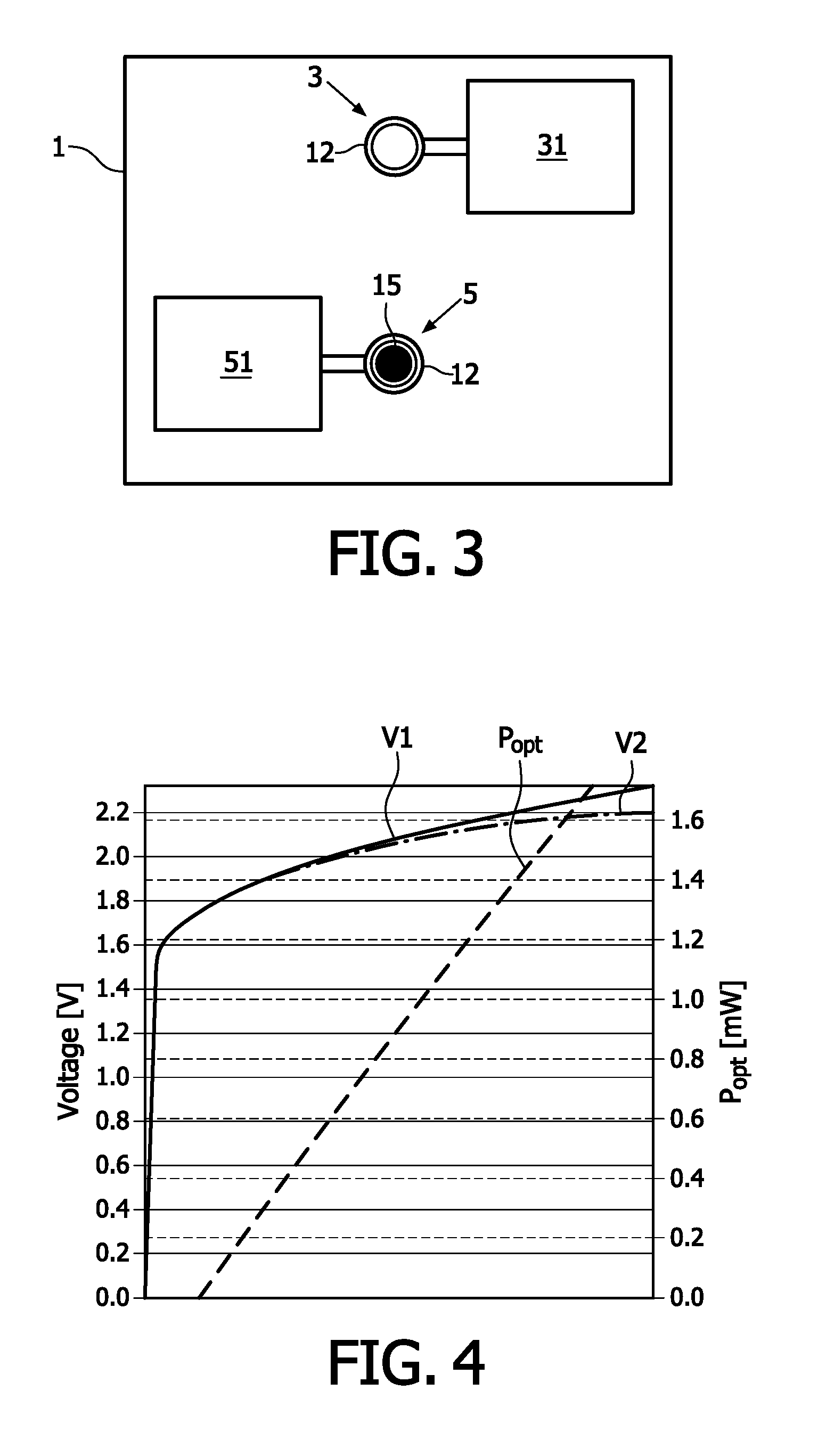Output power stabilization for laser diodes using the photon-cooling dependent laser voltage
a technology of laser diodes and output power stabilization, which is applied in the direction of semiconductor lasers, laser details, electrical equipment, etc., can solve the problems of deterioration upon operation, low efficiency of monitor photodiodes, and low output power usually good indicators of output power, etc., to achieve accurate determination of light intensity
- Summary
- Abstract
- Description
- Claims
- Application Information
AI Technical Summary
Benefits of technology
Problems solved by technology
Method used
Image
Examples
Embodiment Construction
[0033]In FIG. 1 typical characteristics of a VCSEL are shown. Specifically, FIG. 1 shows the characteristic of the laser power and the voltage as a function of the laser current. As can be seen from FIG. 1, the laser output power Popt varies nearly linearly with the laser current whereas the laser voltage is strongly non-linear. Thus, the laser voltage usually is no good control variable to stabilize the laser output power. However, according to the invention the difference of the laser voltage of a lasing diode and a non-lasing diode of similar design does provide a very good control variable which furthermore allows for a simple control circuitry.
[0034]Therefore, a laser device is contemplated, wherein a first laser diode and a second laser diode are placed close to each other onto the same die. One of the diodes is a normal laser, the other one has an additional structure that avoids lasing if a supply voltage is applied that is sufficient for the first semiconductor laser cavity...
PUM
 Login to View More
Login to View More Abstract
Description
Claims
Application Information
 Login to View More
Login to View More - R&D
- Intellectual Property
- Life Sciences
- Materials
- Tech Scout
- Unparalleled Data Quality
- Higher Quality Content
- 60% Fewer Hallucinations
Browse by: Latest US Patents, China's latest patents, Technical Efficacy Thesaurus, Application Domain, Technology Topic, Popular Technical Reports.
© 2025 PatSnap. All rights reserved.Legal|Privacy policy|Modern Slavery Act Transparency Statement|Sitemap|About US| Contact US: help@patsnap.com



